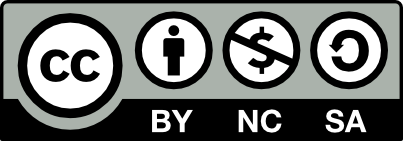Written by Sushmitha.S,
Intern-Lex Lumen Research Journal,
June 2025
INTRODUCTION
The Indian insurance sector has been experiencing remarkable reforms to respond to the increasing needs of a fast-changing economy and the aspirations of a heterogeneous society. Having appreciated the importance of flexibility, innovation, and customer focus, the Insurance Regulatory and Development Authority of India (IRDAI) came up with the Insurance Products Regulations, 2023. This regulatory reform epitomises a trust-based model of governance wherein insurers have the freedom to create and offer products at a faster pace while continuing to provide protection to policyholders through supervision and accountability. The 2023 Regulations substitute the ancient framework of rigidness with a new, streamlined, and innovation-embracing strategy. The regulations, which simplify the product approval process while strengthening consumer protection, are set to usher in revolutionary shifts in the way insurance is imagined, brought to market, and consumed in India.
USE AND FILE FRAMEWORK: TRANSFORMING PRODUCT APPROVAL
One of the most crucial features of the 2023 rules is the implementation of the “Use and File” (U&F) model for the majority of insurance products. Earlier, insurance firms were mandated to use the “File and Use” methodology, under which IRDAI had to give approval beforehand for any new insurance product to be introduced. This system would normally lead to inordinate delays and hindered innovation. With the new Use and File process, insurers are now able to create and launch products directly into the marketplace and inform IRDAI after launch, provided they adhere to given guidelines. This action promotes quicker time-to-market, drives bespoke solutions, and enables insurers to be more responsive to consumer needs and evolving perils. Yet, while insurers have more freedom, they must also prove themselves with greater levels of internal governance and compliance.
MORE EFFECTIVE PRODUCT GOVERNANCE AND INTERNAL OVERSEEING
To counterbalance the greater freedom afforded by the Use and File model, IRDAI requires insurers to have in place a Product Management Committee (PMC). The PMC has an essential role to play in ensuring that all products being brought into the market are responsibly developed, compliant with regulatory requirements, and responsive to the needs of the target market intended. The committee is usually made up of the Appointed Actuary, the Chief Risk Officer, and other top management officials. The duties of the committee are to analyse the financial health of products, track consumer feedback, and consider the ethical and business implications of product features. Such a mechanism of internal control enhances corporate accountability and ensures customer interests are safeguarded even before the product is introduced to the market.
CUSTOMER-CENTRIC DESIGN AND SIMPLIFIED COMMUNICATION
One of the main emphases of the 2023 rules is to make sure that insurance products are constructed such that they reflect transparency, suitability, and clarity. Product documents should be drafted in plain and understandable language, and full disclosure of policy terms, benefits, exclusions, and charges must be given by insurers. This customer-centric approach is aimed at improving financial literacy among consumers, especially in rural and semi-urban regions where insurance awareness is limited. The regulations also discourage the bundling of unnecessary add-ons or features that may confuse or mislead policyholders. IRDAI’s push for transparency is an effort to reduce mis-selling, increase trust in insurance, and promote long-term engagement between the insurer and the insured.
ENCOURAGEMENT OF INNOVATION AND MICRO-INSURANCE SOLUTIONS
The 2023 rules create new opportunities for product innovation as they enable insurers to develop products that cater to unique customer needs and specialised risks. The regulatory environment facilitates the creation of:
- Micro-insurance for poor households
- Usage-based insurance (e.g., pay-as-you-drive for cars)
- Parametric insurance that makes payments according to quantifiable events such as weather
- Digital and bite-sized insurance products for mobile-first customers
Through the adoption of these innovations, the IRDAI is enabling insurers to access low-income and hitherto uninsured groups, lower protection gaps, and promote financial inclusion. The ability to create and bring to market such products in a timely manner also allows insurers to react to emerging perils such as climate change, cybercrime, and healthcare pandemics better.
ONGOING COMPLIANCE AND POST-LAUNCH OVERSIGHT
While insurers can introduce products without pre-launch approval, the regulatory regime also has stringent post-launch compliance norms. Insurers have to submit all the pertinent product information to IRDAI within a specified timeframe and carry out internal checks to monitor product performance and policyholder satisfaction.
IRDAI also has the power to:
- Make in-depth audits or performance checks
- Remove non-compliant or unsafe products
- Resolve policyholder complaints and identify trends in mis-selling or poor service
This blended style, blending flexibility with accountability, is a new regulatory philosophy that incentives good conduct while protecting against exploitation or bad faith. It is a notable departure from prescriptive regulation to a principles-based model focused on outcomes rather than procedures.
CONCLUSION
The IRDAI (Insurance Products) Regulations, 2023 mark the latest milestone in the growth of India’s insurance sector. Through the introduction of the Use and File regime, enhancing internal accountability, and putting consumer interests first, these regulations enable insurers to innovate and expand while ensuring that the fundamentals of equity and protection continue to guide the sector. These rules are well-timed, given the fast-changing nature of risks in the modern world and the importance of more customised, digital, and inclusive insurance products. As insurers adopt this trust-based model, it is equally necessary that they invest in compliance, ethical behaviour, and product literacy. By doing so, they will not only secure long-term regulatory goodwill but also earn the trust of India’s increasing number of insurance buyers. In essence, the IRDAI’s new regulations mark a bold step toward building a vibrant, competitive, and customer-focused insurance market in India, where innovation is encouraged, and consumer welfare is paramount.
REFERENCES
- Insurance Regulatory and Development Authority of India (IRDAI), Insurance Products Regulations, 2023. Available at: www.irdai.gov.in.
- IRDAI Circular on Use and File Procedures, Press Release (2023).
- Economic Times. “IRDAI’s New Product Rules to Speed Up Insurance Launches.” April 2023.
- LiveMint. “IRDAI Reforms Aim to Promote Innovation in Insurance Sector.” June 2023.
- Money control. “Understanding the Impact of IRDAI’s Insurance Products Regulations 2023.”


